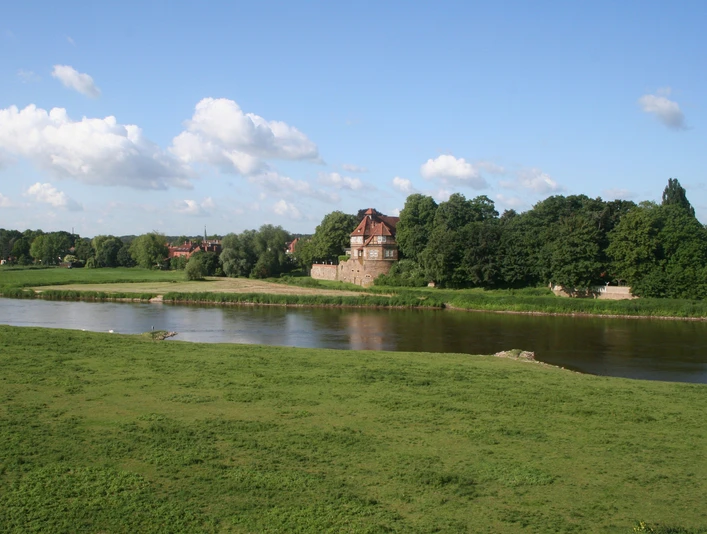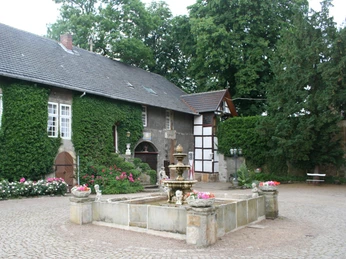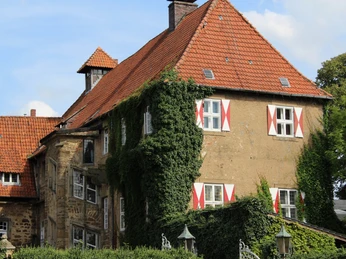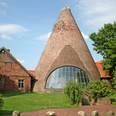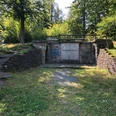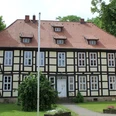The estate was built north of Minden, directly at the mouth of the Ösper into the Weser River, and was originally surrounded by a water moat. The castle was placed under the protection of Saint Georgonius and consisted of a thick, round tower with a dungeon and a defensible palace. It served as the residence of the Prince-Bishops of Minden and was transformed into a palace in the 16th century under Bishop Franz II of Waldeck by the Swabian master builder Jörg Unkair. Dark Portasandstone was used as the building material, and it was decorated with light Obernkirchen sandstone in a stick-style pattern at the windows and door frames. Noteworthy are also the sandstone carvings on the spiral staircase and the magnificent coat of arms of Franz II.
Unfortunately, some structures of the castle complex have disappeared over time: the gatehouse, rondelle, and fortifications. In 1560, Bishop Gerhard of Brunswick-Lüneburg built the so-called "New House" with a banquet hall and church. A gallery on skillfully carved consoles connected the new and old houses. From 1649 to 1669, the castle served as the seat of the Brandenburg government, after which it was abandoned as a government seat and the administration moved to Minden. Today, Schloss Petershagen is used as a hotel and restaurant.
Good to know
Payment methods
Author
Mittelweser-Touristik GmbH
Organization
Mittelweser-Touristik GmbH
License (master data)
Mittelweser-Touristik GmbH
Nearby
